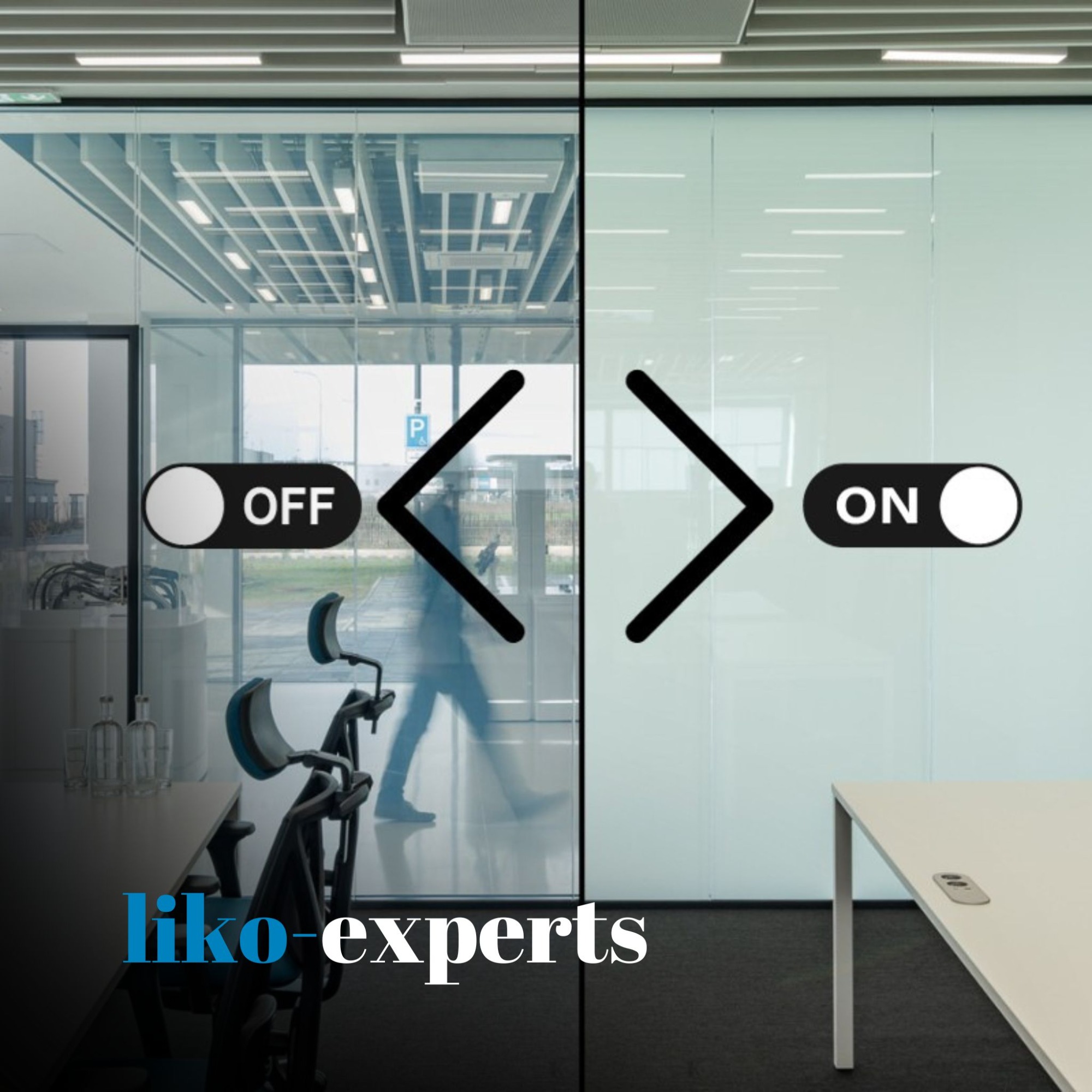LIKO-Experts: 5 Things You Didn't Know About Digital Blinds

In the current era of interior design, we are witnessing a growing trend in the integration of digital blinds. This modern, aesthetically pleasing, and easily maintainable shading solution is taking over design-conscious office spaces. But do you know how this technology works and what's behind the increasing interest in it? Here, we've selected five facts about digital blinds that you may not have known.
Watch the first episode of the LIKO-Experts series, where Orraine Williams introduces the technology of digital blinds.
1. The Magic of PDLC Technology
Digital blinds operate based on Polymer Dispersed Liquid Crystal (PDLC) technology. This material changes its light-transmitting properties through the application of an electricity. Typically, PDLC is supplied in film form, laminated between two pieces of glass. When the electric is off, the molecules are randomly dispersed, rendering the PDLC film opaque. When the current is activated, the molecules align, allowing light to pass through, making the glass transparent. This technology offers an innovative solution for privacy and light control. It's worth noting that when the power is on, the digital blinds are off.

2. Evolution of Digital Blind Technology
PDLC technology isn't new; it has been around for over 30 years. However, the real breakthrough lies in the dramatic reduction of its cost, making digital blinds more popular and accessible for various projects. The most significant recent development has been in power-regulating operating systems, significantly extending the lifespan of PDLC film, now reaching up to 30 years.
3. Overcoming Technical Limitations
Digital blinds have come a long way in overcoming technical limitations. In the past, it was necessary to turn off the PDLC film for four hours daily to prevent crystal damage. Today's systems automatically regulate power, eliminating this limitation. Size limitations have also been addressed, with the ability to process large wall segments. Thanks to large laminating ovens, glass with PDLC film can now reach dimensions of up to 3 m x 2.2 m. Frameless glass connections are also possible. Curved partitions and glass doors have become increasingly popular and can also incorporate this technology.


4. Transparency and Optical Clarity
Transparency is influenced by various factors, including inherent haze due to crystal presence. The type of lighting also plays a significant role; it behaves differently in natural light compared to artificial light. The choice of film should always align with the investor's expectations. If maximum transparency is desired, it can achieve up to 97%, but in this case, it remains slightly translucent when turned on. If complete opacity is required, the film is 95% transparent due to its crystals. As for color, due to the technology type, digital blinds cannot achieve RAL-based colors. The film can be tinted, but most implementations fall within the black-and-white spectrum, ranging from dark gray to nearly white.

5. Installation Readiness and Control Options
The technology is powered by micro-cables concealed in the upper profile of the partition. Transformers are typically placed in the ceiling above the partition. Control options are not limited, ranging from manual switches to smart systems with automation—examples include motion sensors, voice control, or gesture-based control.
